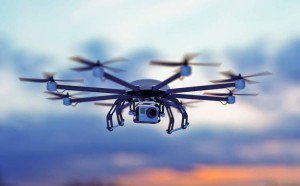Seattle-based DroneSeed and the Nature Conservancy Oregon are gearing up to save the ecosystem across the Pacific Northwest from invasive species.
Drone swarms of up to five aircraft will be deployed to restore rangelands by re-seeding threatened areas – especially in sagebrush steppe habitats. Invasive weed species harm the sagebrush steppe, resulting in a huge swathe of plant loss. In fact, only 50 percent of such plants still exists, with the remaining 50 percent at risk of being lost in just the next 50 years
Nature Conservancy Southeast Oregon Project Manager Jay Kerby explains:
“Working with research partners, we have been testing a variety of high-tech solutions for restoration seeding. For this project, we’ll be mapping about 75 acres of sagebrush habitat with scattered weed patches that are inefficient to target and treat with conventional methods. We are always looking for ways to innovate, especially when it can help us increase the pace and scale of habitat restoration to benefit both nature and people.”
Swarms of up to five drones, using DroneSeed software aerially deploy seed vessels to targeted areas, called microsites, where they’ll grow best. To service significant acreage, DroneSeed’s heavy lift aircraft carry 57 lbs. of seed vessels per drone. The vessels improve seed survival by reducing desiccation or “drying up,” which is a common problem on arid rangelands.
“The Nature Conservancy is an ideal partner for us as we’re highly aligned on mission and are both engaged in developing and advancing technology solutions for conservation outcomes,” DroneSeed’s CEO Grant Canary said. “Our objective with this project is to test and demonstrate that this innovative approach can achieve successful restoration faster and more efficiently than conventional methods.”
Drones have provided a powerful weapon to battle invasive species around the world. On the Galapagos Islands, Island Conservation uses UAV systems to eradicate invasive rats. The new project launches drones and hoppers with applicators designed in 3D printers, dropping rat poison hidden within special bait. The inaugural missions have covered 52 percent of North Seymour Island – making it the world’s first use of drones to remove invasive vertebrates.
Jason is a longstanding contributor to DroneLife with an avid interest in all things tech. He focuses on anti-drone technologies and the public safety sector; police, fire, and search and rescue.
Beginning his career as a journalist in 1996, Jason has since written and edited thousands of engaging news articles, blog posts, press releases and online content.
Email Jason
TWITTER:@JasonPReagan
Subscribe to DroneLife here.
https://dronelife.com/2019/02/28/droneseed-launches-uav-mission-to-fight-invasive-species/
 Unmanned Aerial Vehicle The latest drone news
Unmanned Aerial Vehicle The latest drone news






